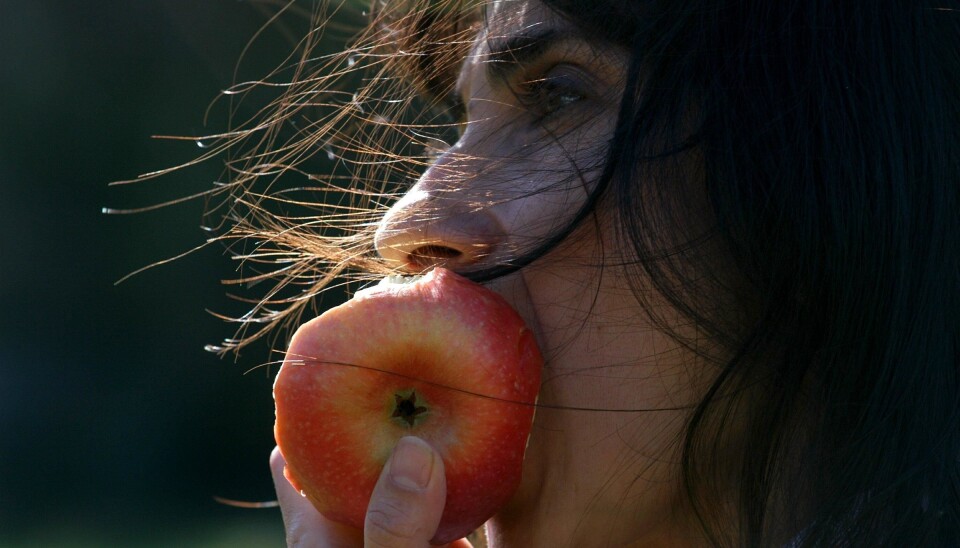
We buy healthier food than in previous generations
Obesity is reaching epidemic proportions. But although we are getting larger and heavier, our diet has become healthier over the last 100 years.
We eat far more food today than we did 100 years ago.
You would think that the rapid growth of the fast food industry would have taken its toll on our health, but in fact the food we buy today has actually become healthier. So shows a new PhD thesis from the University of Copenhagen.
Using data from Statistics Denmark, Tenna Jensen at the SAXO Institute has studied food consumption in the country over the last 100 years. It is the first analysis of food shopping habits to cover this timespan.
"Although food consumption is much higher than it was 100 years ago, dietary changes have improved the health of most people,” says Jensen, who is also an external lecturer at the institute.

The figures from Jensen's PhD thesis are consistent with previous results from the SAXO Institute which show that despite the obesity epidemic and fast food, people in Denmark live longer and get lifestyle diseases later in life than they did 100 years ago.
More but healthier food
Today, Danes buy more fruit, vegetables, meat and fish, and in overall terms consume more protein and less carbohydrate. Sugar consumption is actually lower now than it was before World War 2, while cheese and milk consumption has remained relatively stable. Tenna Jensen discovered this by comparing the consumption of various types of food in 1909, 1956 and 1999.
On the assumption that most of the food purchased is actually consumed, it can be concluded that the eating habits of people in Denmark have become healthier.
But the amount of food purchased today is much more than it was 100 years ago.
"Particularly after 1945 there was a shift in the amount of protein, carbohydrates, rye flour and wheat flour – people bought more and probably ate more," says Jensen.
Improved food quality
Other changes in food purchasing habits are not particularly positive, but closer inspection reveals that the trend has probably served to improve health.
For example, the consumption of fat is higher today than it was in 1909, although not as high as in 1956, when fat intake peaked. But the fats present in foods today are in many ways healthier than those used just 50 years ago.
One example is margarine, which became very popular among agricultural workers in the first half of the 20th century, when their disposable income started to rise. In those days, margarine contained many trans fatty acids, the consumption of which increased the risk of cardiac disease to a much higher level than it does today.
Another example is pork, which is consumed in much greater quantities than in 1909. Pigs are now slaughtered earlier and are fed on soya-based feed which results in leaner meat.
"It is not always just a question of how much food is consumed, but also how good the quality is," says Jensen. "Food quality is often associated with the times when the food was produced. So we cannot conclude that people are becoming unhealthier just because they buy more fat-containing food."
Healthier mentality
However, the results do not mean that people in Denmark did not take their health seriously 100 years ago, says the researcher. Although the modern view is that eating habits have become healthier, it must be borne in mind that health was perceived differently back in time.
"It's easy to forget that the population under study had some fundamentally different ideas on what constituted a healthy diet, compared to contemporary thinking," she says. "Even today there are sizeable differences in the perception of healthy food. People living in urban environments are more occupied with ecology than people living in the countryside. Our understanding of what is healthy is constantly shifting."
Disease-free meat
Certain foods, such as pork, have become cheaper and more widely available today. Furthermore, people in Denmark have more disposable income, which partly explains why we buy more sensibly. In contrast to previous generations, today's shoppers are free to pick and choose from the range of food available in the supermarkets.
"A hundred years ago there were few who could buy meat that was free from disease. Today, practically everyone can buy disease-free meat and that is a positive development that has probably helped make us healthier," says Jensen.
She believes the results from her PhD thesis can be used to more closely examine which combinations of foods have put certain population groups at greater risk of lifestyle diseases.
Her analysis has identified that there are clear differences between the dietary habits of different population groups, such as agricultural workers who suddenly developed a taste for margarine. Although it cannot be said with certainty, some of these differences could be the reason why lifestyle diseases like cardiovascular disease and obesity affect the population unequally – even today.
Read the article in Danish at videnskab.dk
Translated by: Nigel Mander









